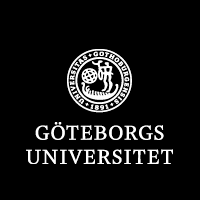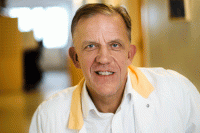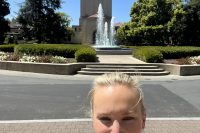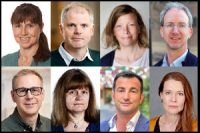PUBLISHING ETHICS. Akademiliv (Academy Life) provides a concise report from the webinar on questionable publications and the changing publishing climate presented on January 25. The webinar was organized by the Council for Research Ethics at Sahlgrenska Academy in collaboration with the Biomedical Library.
Watch the film from the seminar (link to GU Play), the seminar was held in Swedish.
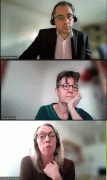
The seminar was part of the series “Research Ethics in Academia – Open Faculty Meeting.” Speakers included Gustaf Nelhans, a researcher and associate professor at the Swedish School of Library and Information Science at the University of Borås, and Eva Hessman and Linda Hammarbäck, librarians at the Biomedical Library, University of Gothenburg.
Publishers can make a lot of money through scholarly publication, and the prospect of quick earnings also attracts questionable market players/actors/operators/competitors. Some are less reputable, with a flawed or non-existent peer-review process.
Different funding models
There are different ways of funding publishing, mostly based on either subscription fees (i.e. pay to read), or subscription fees or article processing charges (APCs). Under the APC funding model, researchers pay a publication fee to provide open access to the article.
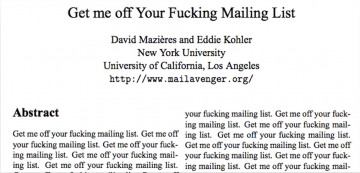
But recently, read-and-publish agreements, also known as transformative agreements, have become the dominant funding model.
Most major publishers–such as Elsevier, Wiley, and Springer Nature–now have agreements with the library consortium Bibsam. This means that publishing costs for Swedish corresponding authors are centrally covered by the organizations that participate in the agreements. However, some publishers who have not signed agreements and several titles that publishers have chosen not to offer in the central agreements still are paid for with APC fees. There also are many other forms of open access funding where costs are covered in other ways, such as by research funding bodies or libraries, learned societies and models for parallell publishing (known as “green open access”).
Assessed on a case-by-case basis
Researchers are regularly contacted by journals of dubious scholarly quality that want to charge for open access publishing of articles. The existing publishing climate can be stressful for researchers, which makes it tempting to accept publishing offers from less reputable journals.
There is always a risk that articles will be published in disreputable journals. Often the researcher needs to do a bit of sleuthing to assess the quality of the journal. The publishing landscape is constantly changing, making it difficult to create transparent criteria for determining what is reputable. Consequently, there are no reliable blacklists clearly identifying the disreputable journals. However, a few lists exist that provide some indication of whether a journal is reputable. These include the Norwegian Register for Scientific Journals, Series, and Publishers and the Directory of Open Access Journals (DOAJ).
Think, check, submit
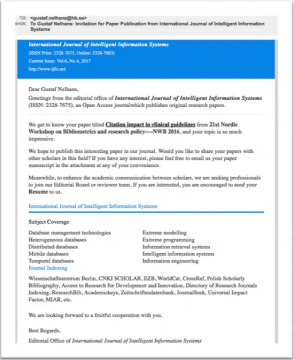
“If the journal communicates with poor spelling and grammar, that of course triggers a warning flag. These journals also often promise a very fast peer review process, maybe only two weeks,” Nelhans said.
In the last half of the seminar, librarians Eva Hessman and Linda Hammarbäck offered additional good advice on how researchers can identify journals that are not reputable. The advice can be summarized as “think–check–submit.” Researchers at the University of Gothenburg can receive support on publishing matters from the University Library by contacting forskarservice@ub.gu.se.
No innocent lambs
Disreputable journals are often called “predatory journals,” but Gustav Nelhans prefers to refer to them as dubious publications. The predatory journals term signifies that the journal bears all responsibility, which he thinks is wrong:
“When we describe them as predatory journals, we see them as predators making us researchers innocent lambs, but we have to take responsibility for the kind of publication we submit to. As supervisors, we also have a great responsibility for ensuring that our doctoral students never become involved in publishing in disreputable journals,” Nelhans said during the seminar.
“I have seen examples of doctoral students who have submitted to journals before realizing that the journal is not reputable. This can lead the doctoral student having to pay the journal recall the manuscript so it can be submitted to a serious journal.”
Less common at older universities
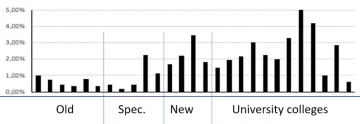
Together with Theo Bodin at Karolinska Institutet, Gustaf Nelhans published an article in 2020 about publications by researchers at Swedish higher education institutions in blacklisted journals during the 2012–2017 period. They identified 1,743 papers published in such journals during the period, which in a downward trend corresponded to 0.9–0.5% of the annual number of scholarly articles published by researchers at Swedish higher education institutions. https://doi.org/10.1162/qss_a_00033
The difference among universities was large. Researchers at newer higher education institutions tended to publish a larger proportion of their research in the questionable journals than researchers at the large and comprehensive or specialized universities. This may be due to a less established publishing culture or weaker support structure at the newer institutions. A related reason is that this is more likely to occur in applied research areas and in newly professionalized and academicized areas. During the period studied, the proportion of articles published in questionable journals declined.
Gustaf Nelhans and his colleague also compiled words that the journals used in their titles. Those occurring frequently were research domains in engineering, management, and educational sciences. Many journals are also active in the fields of health sciences and biotechnology.
Seldom cited
Publications in questionable journals seem to have little impact on the scholarly community, considering how rarely they are cited in other publications. A preprint from 2019 (How Frequently are Articles in Predatory Open Access Journals Cited, Björk et al.) went through 250 randomly selected articles from such journals and found that 60 per cent of them were not cited at all.
“A very small percentage of these articles received a substantial number of references. Whether we researchers actually recognize a publication in a questionable journal is a question well worth discussing,” Gustaf Nelhans said.
Only nine percent of articles that had undergone peer reviews before publication did not receive a single citation.
Read more about publishing ethics at Sahlgrenska Academy’s website Research Ethics.
If you have any questions about the choice of journals, dubious publishers or APC fees, please contact the Biomedical Library, forskarservice@ub.gu.se or see https://www.ub.gu.se/en/publish/open-access
BY: ELIN LINDSTRÖM
